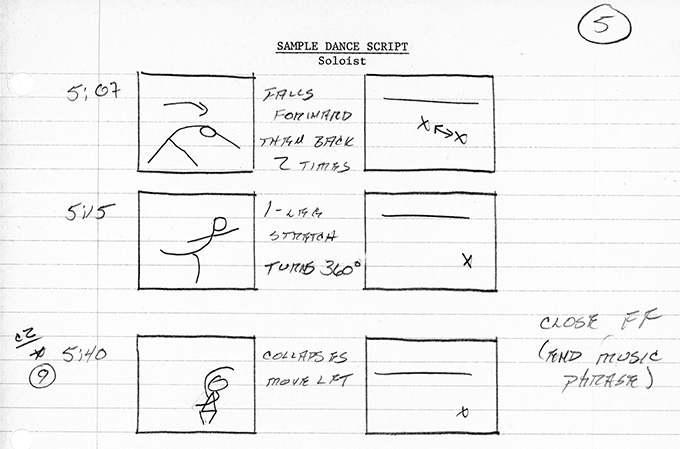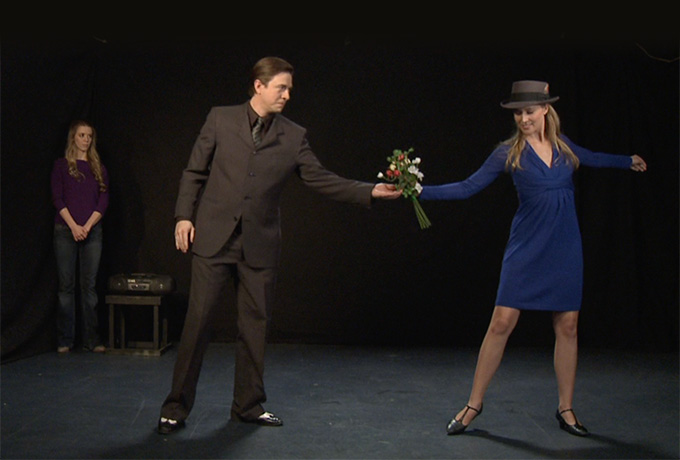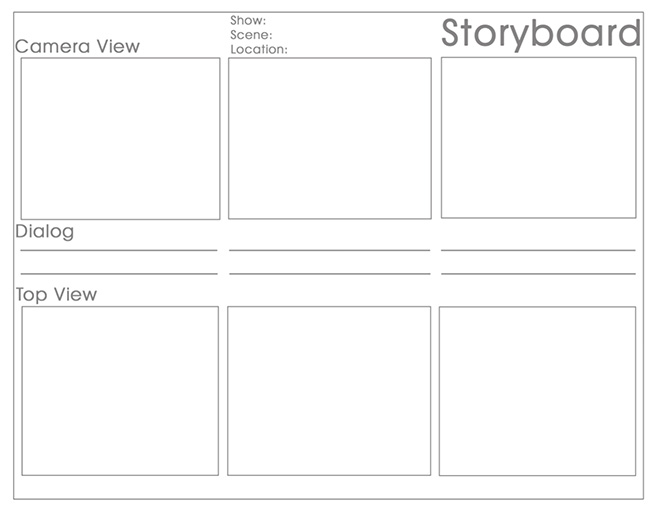 Many of us have seen storyboards for major motion pictures. Most are beautiful and some are works of art.
Many of us have seen storyboards for major motion pictures. Most are beautiful and some are works of art.
The problem is that these lovely images distract us from the fundamental purpose of a storyboard. A storyboard may, or may not, show us what a shot will look like. That’s not it’s most important function. What a storyboard is REALLY designed to do is to help us think.
By sketching a scene – and I do mean sketching – you can answer questions like:
I’ve used storyboards all my life, even on simple projects and no one would ever accuse me of any innate artistic skills. Why? Because when I draw actor, camera and crew blocking I get my head out of the script and into the 3D world of actual physical production.
I started thinking about storyboards, again, this morning because tomorrow I’m teaching a class on pre-production planning; and storyboards are an essential part of this process.
In my course on Visual Literacy there comes the lecture on planning and pre-production in video. My classes are not for film students, rather, they are for business, marketing and engineering majors. As soon as I talk about planning you can see them start to fall asleep.
Planning is hard. Planning is often boring. But, what students don’t realize until they’ve done a project, is that effective planning is essential to any successful media production.
To me, planning a production consists of answering three key questions:
WHAT…
The first and most important question is: What story are you telling and why is it important that you tell this story? This forces us to focus first on storytelling. Why should an audience care about our story?
This is the phase also called “script development” that seems to take forever. Finding a good story is hard. Finding the right way to tell that story is really, really difficult – there are many options and not all of them will work.
All too often today, we fall back on what’s been done before. While safe, this rarely leads to effective results – whether we are creating a feature film, a commercial or a social media post. Creativity resides in thinking about the best ways to tell our story.
WHERE…
Where we will tell our story and its corollary, “When does your story take place?” allows us to focus on locations, costumes, and getting people from Point A to Point B then safely back home at the end of the day.
Finding the answer to “Where…?” is where the dreams of the story meet the reality of the budget. Yes, it would be lovely to shoot on a rundown moon colony except, um, they are a little hard to reach these days.
HOW…
How encompasses all the different elements of production, from the simplest student project to the most complex feature film. At this point, we know the story, we know where and when that story is being told. Now we need to figure out how to tell the story given the people, time and resources we have available.
This, to me, is the most fun – and generally least stressful – part of production. Planning how, in spite of all the obstacles, we are going to get our story told. And, from my experience, it is in overcoming obstacles that true creativity rests. Our brains work best when they have something to fight against.
Which brings me back to storyboards. One of the projects I really enjoy shooting is dance, probably because I’m such a terrible dancer myself. Also, when you think about it, all actor blocking is a “dance,” which is to say a specific movement designed for creative purposes.

Many years ago, I had the opportunity to direct dance sequences for PBS. The image above is from my script. Clearly, this would not win any artistic awards. But, what it did better than anything else was help me figure out WHERE my dancers would be located, WHAT they would be doing and HOW I was going to shoot it.

I used this same technique in my training series: “2 Reel Guys.” In the episode illustrated above, we were showing how choreography can communicate a story just as effectively as dialog, even though no words were said.

Out of this experience, I designed my own storyboard form which I’ve been using for years. The top box is where you sketch what the audience will see. The bottom box is as though you were looking down from above and drawing an architectural “map” of where stuff is located: actors, camera, audio, blocking, set…
The purpose of these drawings are to illustrate to both actors and crew answers like: this is where we are setting up, we are shooting a wide shot, the actors are moving here, the gear sets up there, the camera moves from here to there, the craft table is over there.
In creating this storyboard for key shots, you begin to see problems with the logistics of a shot, issues in cross-cutting, lighting, blocking and the myriad other details that constitute production. These are FAR easier to solve during planning than on set with 50 people looking at you.
Oh! I should also mention that the number one comment made by my students when they finish a project is: “I wish I’d spent more time planning.” If that lesson sticks after they graduate, they’ll do fine.
EXTRA CREDIT
2 Responses to Why Use Storyboards? To help us think!
These sketches are very useful to get your crew and all departments all thinking in the same direction, to understand what the setup is and thus what their roles are. Big time-saver and question-answerer on locations.
There are a number of apps out there now that can be used to storyboard and pre-viz in varying levels of detail, even if you arte not an artist. Heck, use powerpoint if nothing else… On my low budgets, I often turn to the free version of “Sketch-Up” if I have to make something fancier than stick figure drawings. There’s a free library of objects and actor figures available to drop into a scene, and you can even animate camera moves to simulate the final project… if you need to get that fancy. I like that the 3-d space can use actual measurements taken from the location.
Some dedicated pre-vis and storyboarding apps will contain scale models of dollies, jibs, track, etc., and they will more accurately model various lens apertures, so you can virtually model and test a complex shot sequence at home in pre-production, get it approved, and have some confidence that everything will fit right when you get on-location later.
Thanks, Mark!
I always appreciate your comments.
Larry